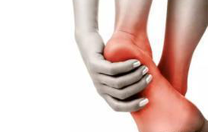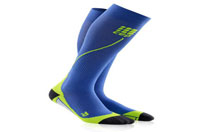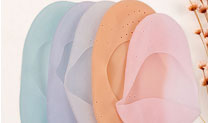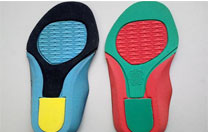Corn, foot pain, flat feet... A pair of suitable
insoles may help you solve problems.
According to a study of the American Orthopedic Foot and Ankle Society, the number of women who suffer from foot pain is about as nine times as men, which mainly because they wear the wrong shoes. In addition to wearing the wrong shoes, there is also a part of the reason that we use the wrong insoles, resulting in the wrong focus of foot and, thus causing pain. The total volume of both feet is less than 5% of the whole body, but when we walk, the feet have to bear 1.5 times the weight of our body, and also shoulder the work of pushing the body forward; when running and jumping, the weight increases to 2-3 times, or even 4-4.5 times. Therefore, once wearing shoes that do not fit the feet, it is not only easy to cause injury to the feet, but also may affect the knee joint, hip joint or cause lower back pain. For patients with backache, it is always the case that it is because they wear wrong shoes or buy unsuitable insoles on their own.
Although everyone knows that high-heeled shoes are not good, for the sake of beauty, or for the needs of the workplace, high-heeled shoes are still the shoes in every woman's shoe cabinet. High-heeled shoes can cause excessive pressure on the forefoot and excessive back curvature of the toes, which can affect joints and tendons. Long-term wearing of high heels will make the heel tendon huddled due to inadequate extension. After taking off the high heels, the length of the Achilles tendon will be not enough, resulting in pain caused by increased plantar fascia pressure. In addition, wearing high-heeled shoes for a long time prone to cause hallux valgus, corns, cocoons, plantar fasciitis and other high-heeled shoes syndrome, and even appear "patellar chondromalacia". The patella is located between the thigh bone (femur) and the calf bone (tibia). When the patella is subjected to long-term weight pressure or abrasion caused by external forces, it will feel pain and restrict knee mobility. If women often feel pain in their front knees, especially after sitting, squatting, climbing stairs, climbing mountains and jumping, be careful that it may be chondromalacia patellae.
After all, high-heeled shoes violate ergonomics. Experts suggest that it is better to wear fewer shoes, not too long, and try to choose shoes with enough space for toes to stretch and heels not to exceed 4 cm. As a last resort, a
silicone cushion for shoes can be placed on the metatarsal bone (usually the crease of the shoe, or the back half centimeter of the widest part of the shoe) and the arch and heel of the foot to absorb shock and disperse pressure. But the most important thing is to adjust the position of the foot pad according to the foot shape, so as to relieve the discomfort correctly. And for women with corns or hallux valgus, now there are some specific insoles on the market, can protect, prevent the pain of friction. However, because high-heeled shoes tend to concentrate pressure on the forefoot, causing metatarsal pain, the so-called "metatarsal pain", many women think that soft insoles can relieve plantar pain, which is a misconception. On the contrary, they are more likely to cause uneven pressure and aggravate pain because of insufficient support. In addition, if the shoe last is small and the toes are not stretched enough to form claw toes, it will increase the pressure on the metatarsal bone and aggravate plantar pain. In order to protect your feet correctly and avoid secondary injuries, it is necessary to consult a professional ankle surgeon or physiotherapist. When wearing high-heeled shoes, insoles can be placed at the metatarsal bone of the forefoot, the arch of the foot and the heel of the hind foot to disperse the pressure.



